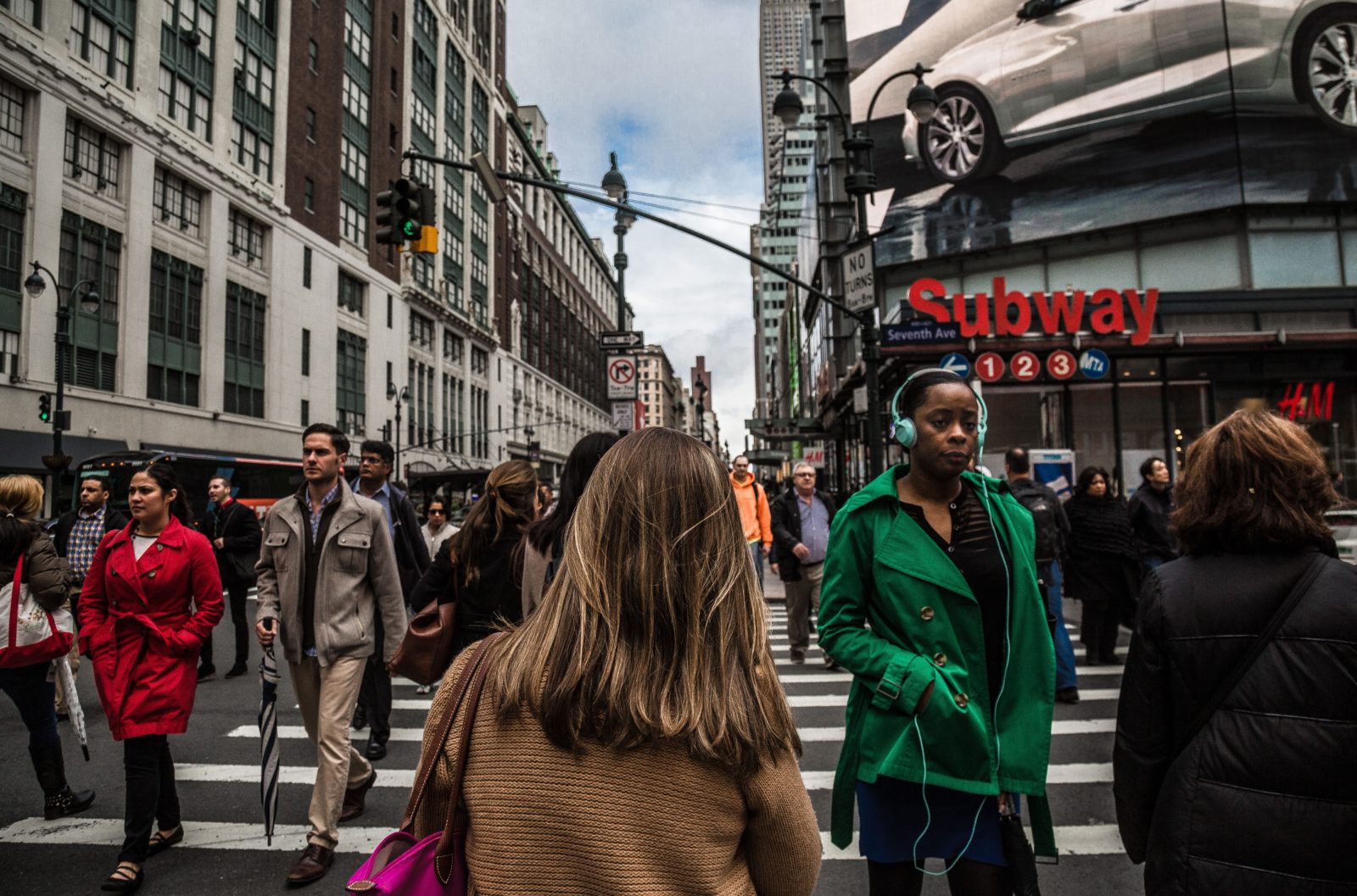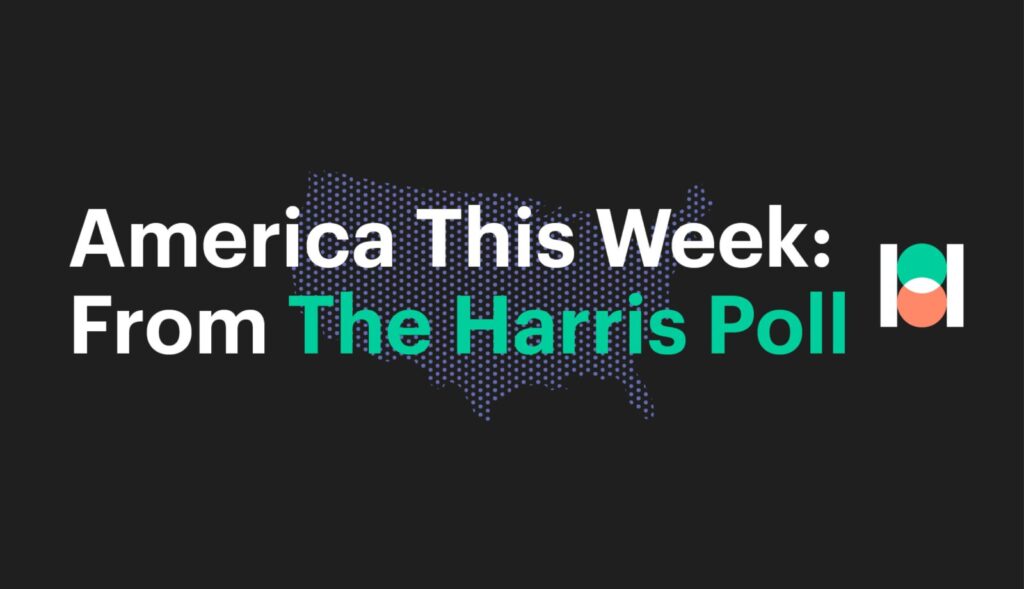Brief • 5 min Read

Research by The Harris Poll and the Chicago Council on Global Affairs conducted in November 2020, surveying residents of America’s largest metropolitan areas about their perspectives on urban living and the condition of their cities, reveals that metropolitan residents are still invested in the well-being of their cities despite the impact of the COVID-19 pandemic.
The pandemic has exacerbated many issues that were already primary city concerns, such as public safety, the cost of living, and racial inequality, to name a few. How residents experience these issues varies significantly based on race and ethnicity. Examining resident perspectives on urban living through the lens of race can help city leadership understand how to promote equitable recovery from the pandemic.
Investigating the issues
Across ethnicities, those living in America’s largest cities say they are most concerned about the COVID-19 situation in their respective cities. However, other top concerns among each group vary.
For White residents, top concerns are economic and safety oriented. After the pandemic, they say they are most concerned about local taxes and fees (47%), the economy (40%), and public safety (27%).
For metropolitan residents of color, the top issues after the pandemic are often related to race-related issues, the economy, and housing. More specifically, for African Americans, the top issues after the pandemic are race and housing related, including racial equity (45%), public safety (31%), and housing (25%). Asians are more focused on local economic situations; top concerns after the pandemic are the economy (40%), public safety (38%), and local taxes and fees (38%). Similarly, Hispanic Americans are most concerned about the economy (41%), local taxes and fees (38%), and housing (30%).
In addition to concerns about public safety, the economy, and housing, the local environment and transportation are also of particular concern to Hispanic and Asians.
A varied pandemic perspective
On average, 61% of metropolitan area residents say they are most concerned about the COVID-19 pandemic. Despite its ranking as the top concern, perceptions of the government’s effectiveness vary by ethnicity.
When asked how effective different government levels and agencies have been at handling the pandemic, in general, residents of color give higher effectiveness ratings that White residents, especially when assessing the effectiveness of city-level officials.
Compared to just 35% of White residents, 51% of Asians, 48% of African Americans, and 40% of Hispanics living in metropolitan areas say their city’s mayor has been effective at addressing the COVID-19 pandemic. They also give higher effectiveness ratings to other county or regional officials (42% of Asians, 40% of African Americans, and 38% of Hispanic Americans vs. 32% of White residents).
In fact, African Americans express the greatest confidence in their mayor’s ability to effectively respond to the COVID-19 pandemic (53% vs. 41% of Asians, 36% of Hispanic residents, and 34% of White residents).
Although across ethnicities, all residents would like nationally elected officials to take the lead at responding to COVID-19, this may also explain why more metropolitan residents of color say they would prefer city-elected officials take the lead at addressing the pandemic (approximately one in five residents of color vs. one in 10 White residents).
The local economy & race
The local economy, taxes, and fees are noted as of particular concern to White, Hispanic, and Asian residents while economic inequality is noted as less of a concern. Two in five of these residents say they are most concerned about these issues compared to less than a third of African American residents.
Housing
Looking more specifically at the cost of living, housing is of greater concern for metropolitan residents of color. Compared to just 14% of White residents, 30% of Hispanic, 26% of Asian, and 25% of African American residents say they are most concerned about housing in their city.
In fact, three quarters of Hispanic and African American residents say the affordability of housing in their city is very or extremely important (compared to just 57% of White residents and 63% of Asian residents). Consequently, the majority of Hispanic and African American residents say that their city does not have enough affordable housing options.
Among the half of all metropolitan residents that say their city does not have enough affordable housing, 86% say they support the creation of more affordable housing in their city. This is slightly higher for African American and Hispanic residents (90% and 88%, respectively).
Of this group, 85% support the creation of additional affordable housing options in their neighborhood. This sentiment is slightly higher among Asian residents at 91%.
Currently, most residents are not very confident in their city’s ability to keep housing affordable though African American residents show more faith than other ethnic groups. Overall, 31% of metropolitan residents are very or extremely confident in their mayor’s ability to keep housing affordable. African American residents display more optimism at 44%. (In fact, across different local issues, African American residents consistently expressed more confidence in their mayor to handle issues.)
Despite lower levels of confidence, most metropolitan residents (54%) say that their mayor has been effective at addressing the affordability of housing. Such sentiment is consistent across ethnic groups, but is highest among Asian and African American residents (59% and 58%, respectively).
Economic inequality
City housing issues are often symptomatic of a larger problem: economic inequality. Overall, metropolitan residents are divided on if government leaders have been effective in dealing with such inequality. Just over half (52%) say their city’s mayor has been effective in addressing economic inequality while 50% say the same about their state governor. Even fewer say the federal government has been effective at handling the issue (42%).
Perhaps surprisingly, African American residents give some of the highest effectiveness ratings to local government officials, especially when compared to other non-White resident segments. The majority say that their city’s mayor (54%) and their state’s governor (56%) have been effective at addressing economic inequality. By comparison, just 50% of Hispanic residents and 45% of Asian residents say the same of their mayor, and only 42% of Hispanic residents and 46% of Asian residents say the same about their governor. It’s worth noting some of this may be influenced by the metropolitan areas where African Americans are more likely to settle compared to White, Asian, and Hispanic residents.
An eco-friendly future
Compared to White and African American residents, Hispanic and Asian residents express the greatest concern about the environment and climate change in their city (24% and 13% vs. 28% and 31%, respectively).
Despite varied concern about climate change, most residents (56%) say that cities should be doing more to combat climate change. Hispanic residents say this more often at 63%.
However, metropolitan residents are divided on how effective city leadership has been at handling local climate change. Just 49% of all metropolitan residents say their mayor has been effective at addressing climate change. When examined by ethnic group, it appears White residents are the only ethnic group that say their mayor has been effective at addressing climate change — thought the majority is a small one (52%).
On the other hand, while at least half of all major ethnic groups say that their city’s parks and recreation departments have been effective at addressing climate change, this sentiment is highest among White and Hispanic residents (57% for both White and Hispanic residents, 50% for both African American and Asian residents).
As noted previously, African Americans again express the most confidence in their mayor’s ability to address climate change. Twenty-nine percent of all residents say they are very or extremely confident in their mayor’s ability to address climate change; this is highest among African Americans at 39%.
That said, middling perceived effectiveness and generally low confidence levels among residents means that cities have a long way to go in creating the environmentally responsible cities many residents — especially residents of color — expect.
Inequity, safety, and immigration
Large cities often witnesses many instances of discrimination, especially those related to policing and immigration. Today, roughly a quarter of those living in America’s largest cities say that they are most concerned about public safety (30%) and racial equity (24%) in their respective cities.
With regards to policing, protests regarding social justice and resident maltreatment by police were increasingly common occurrences during the summer of 2020 after the death of George Floyd. Currently, residents living in large metropolitan areas are fairly divided on their concern about social unrest in their city. Forty-nine percent say they are concerned while 51% say they are not.
Digging deeper and perhaps as a function of where different ethnic groups live, most White residents are not concerned about social unrest in their city (56%) while at least half of all residents of color express concern about local unrest. Such concern is largest among Hispanic residents at 59%.
Moreover, among those who say they are concerned about social unrest in their city, residents of color again are the most concerned about unrest specifically in their neighborhoods. While only 55% of White residents say they are concerned about neighborhood unrest, 70% of Hispanic, 68% of Asian, and 65% of African American residents say the same.
Protest concerns are often mentioned alongside the Black Lives Matter movement. Overall, roughly two-thirds of all metropolitan residents support the Black Lives Matter movement; however, this is heavily influenced by the support of residents of color. Compared to 54% of White residents, 80% of African American residents, 71% of Hispanic residents, and 66% of Asian residents say they support the movement.
In addition, most residents say that their local leadership has been effective at handling protests over racism and policing. However, such local approvals are more nuanced when looking specifically at African American residents. While three in five say their mayor has been effective at addressing protests — similar to other ethnic groups — African Americans are the only major ethnic group that does not say their city’s police, their county’s sheriff’s departments, and other county or regional officials have been effective at addressing protests.
African American residents are also critical of the federal government: only a third say that the federal government has been effective at addressing protests compared to roughly two in a five residents from other ethnic groups.
Despite more critical ratings of government leaders among African American residents, they still display higher confidence in their mayor’s ability to respond to recent protests about racism and policing compared to ethnic groups. Compared to a third of White, Hispanic, and Asian residents, 47% of African American residents say they are very or extremely confident in their mayor’s ability to respond to recent protests about racism and policing.
The public sector is facing a racial reckoning just as much as the private sector. When it comes to creating safe cities for people of color, especially African Americans, city leaders will need to collaborate with local officials to create a sense of confidence and trust across all ethnic groups. Given their perceived effectiveness across ethnic groups, and noteworthy vote of confidence among African American residents, mayors are best equipped to take the lead on local, racial equality initiatives.
Immigration
Two in five big city residents say that issues in their city or metropolitan area are very or extremely affected by global events or trends like climate change, but also like immigration patterns. Although immigration policies are still dictated by the federal government, some large American cities have worked to develop their own approach to immigration separate from national government.
For example, some large metropolitan areas like Los Angeles have also become known as sanctuary cities for their more forgiving approach to certain immigrants compared to the federal government. Additionally, Chicago’s Welcoming City Ordinance aims to make Chicago the most immigrant-friendly city in the country by ensuring the Chicago Police Department cannot cooperate with U.S. Immigration and Customs Enforcement (ICE). Although Philadelphia does not consider itself a “sanctuary city,” it does officially define itself as a “Welcoming City.” This means that city does not allow its employees, including police officers, to ask about the documentation status of people they encounter. However, the city will still support and collaborate with federal law enforcement and follow judicial orders and warrants.
Overall, most residents generally agree their cities should be allowed to dictate some of their own immigration policies, and more specifically, in collaboration with cities outside the U.S. Eighty-six percent say it is at least somewhat important that their city engage internationally with other cities and governments on immigration; 57% say it is very or extremely important for their city to do so.
Hispanic residents see the value in international most often: 65% say it is very or extremely important for their city that their city engage internationally with other cities and governments on immigration. This appears to align with the particular importance of immigration policy to this group.
Despite the general support for international collaboration, major ethnic groups split on whether cities should have the power to develop immigration policies that differ from federal policies. Roughly two-thirds of Asian and White residents are opposed to such power (67% and 62%, respectively) while a little over half of African American and Hispanic residents say cities should have this power (55% and 54%, respectively).
Looking Ahead
Currently, two in five African American and Hispanic metropolitan residents say they live in a downtown area. Moreover, compared to a third of white residents, at least half of African American, Hispanic, and Asian residents say that if they could live anywhere, they would live in a city. With residents of color showing such a strong preference for urban living, the future of American cities will include significant ethnic diversity. This study has indicated areas where city dweller experiences are unequal. Studying ethnicity-influenced perspectives on urban living reveals that the future of cities relies not just on fixing key local issues but also ensuring such solutions equalize experiences across ethnic groups.
Methodology
This survey was conducted online within the United States between November 5, 2020, and November 16, 2020, among 1,200 adults (aged 18 and over) by The Harris Poll on behalf of the Chicago Council on Global Affairs. The respondents surveyed were evenly divided among six U.S. metropolitan regions: New York City, Los Angeles, Chicago, Houston, Philadelphia, and Phoenix. Respondents self-identified the community type (i.e., central city/downtown, inner suburb, outer suburb/exurb, and rural) in which they lived. Figures for age, sex, race/ethnicity, education, region, and household income were weighted where necessary to bring them into line with their actual proportions in the population. Propensity score weighting was used to adjust for respondents’ propensity to be online.
All sample surveys and polls, whether they use probability sampling, are subject to multiple sources of error which are most often not possible to quantify or estimate, including sampling error, coverage error, error associated with nonresponse, error associated with question wording and response options, and post-survey weighting and adjustments. Therefore, the words “margin of error” are avoided as they are misleading. All that can be calculated are different possible sampling errors with different probabilities for pure, unweighted, random samples with 100% response rates. These are only theoretical because no published polls come close to this ideal.
Respondents for this survey were selected from among those who have agreed to participate in our surveys. The data have been weighted to reflect the composition of the adult population of each metropolitan area. Because the sample is based on those who agreed to participate in the online panel, no estimates of theoretical sampling error can be calculated.
Responses in this survey were tested for statistical significance using a Z-test with a confidence level of 95% and a Z-test with a confidence level of 90%. For more information on methodology, please contact Dami Rosanwo.
To explore more insights from our Future of Cities research, click here.
Subscribe for more Insights
Subscribe to our newsletter for the latest trends in business, politics, culture, and more.
Download the Data
Get the full data tabs for this survey conducted online within the United States by The Harris Poll on behalf of the Chicago Council on Global Affairs between November 5, 2020, and November 16, 2020, among 1,200 adults (aged 18 and over).
Download
Subscribe for more Insights
Subscribe to our newsletter for the latest trends in business, politics, culture, and more.
Download the Data
Get the full data tabs for this survey conducted online within the United States by The Harris Poll on behalf of the Chicago Council on Global Affairs between November 5, 2020, and November 16, 2020, among 1,200 adults (aged 18 and over).
DownloadRelated Content








